A Complete Institute of Fine Arts & Crafts in India
Institute of Fine Arts & Crafts
Colour schemes in art refer to the organised and intentional use of colours to create specific aesthetic or emotional effects in a piece. They are essential for creating harmony, balance, and mood in visual compositions.
Different Types of Colour Schemes are Mentioned Below:
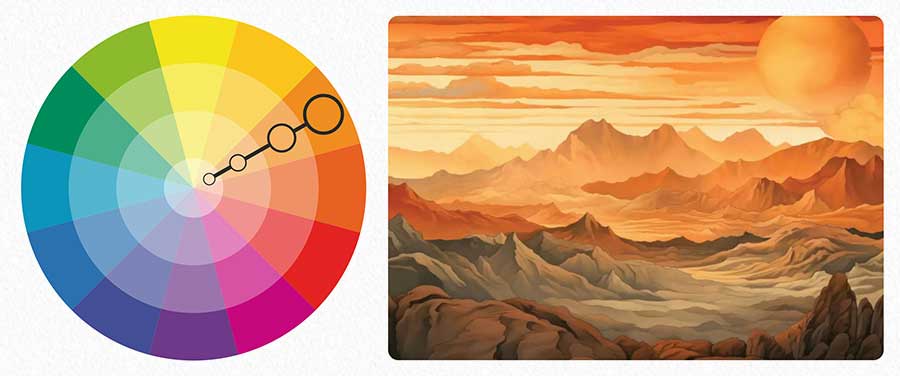
This scheme uses variations in lightness and saturation of a single colour. It is simple and harmonious, often creating a soothing effect.
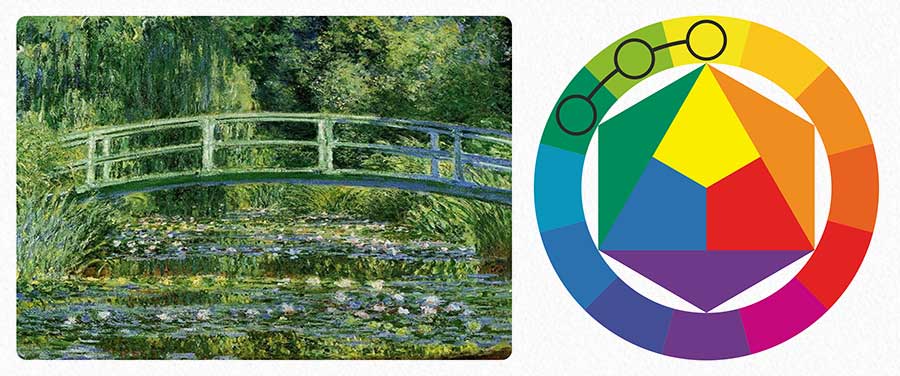
This scheme uses colours that are next to each other on the colour wheel. These colours usually match well and create serene and comfortable designs.
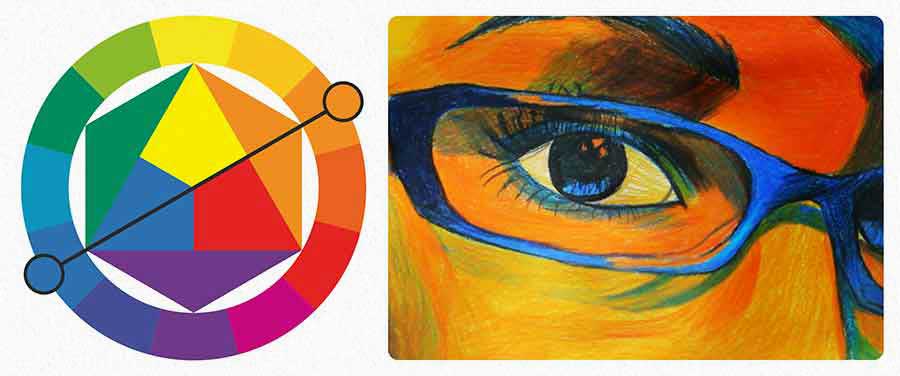
This scheme uses colours that are opposite each other on the colour wheel. This high-contrast combination is very vibrant and is often used to make elements stand out.
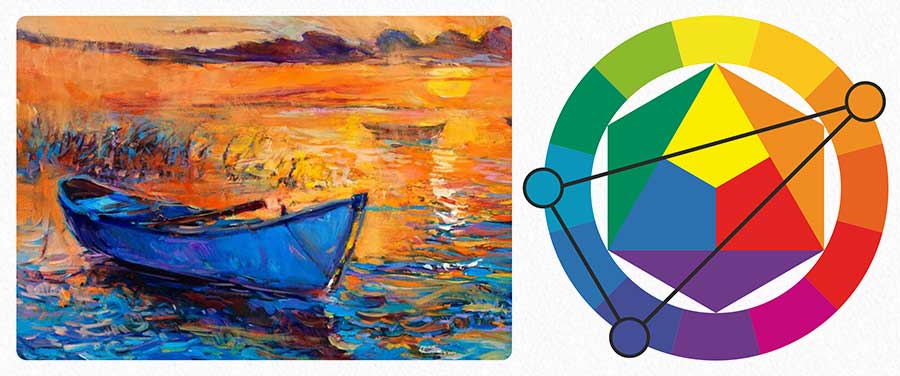
This is a variation of the complementary scheme. It uses a base colour and the two colours adjacent to its complementary colour. This provides high contrast like the complementary scheme but with less tension.
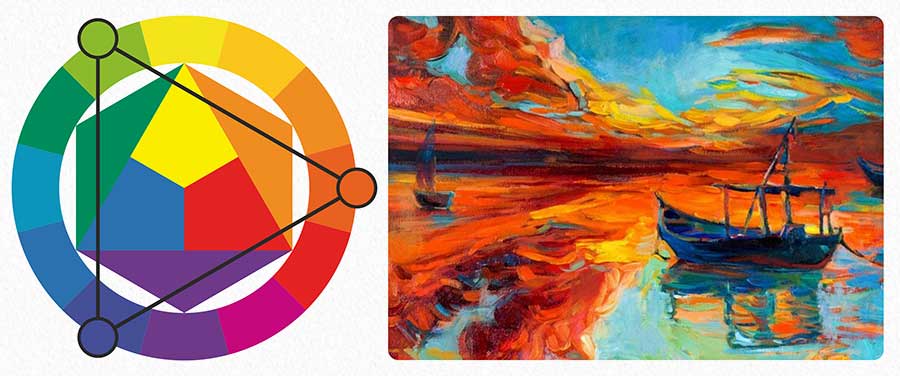
This scheme uses three colours that are evenly spaced around the colour wheel. It offers strong visual contrast while retaining balance and colour richness.
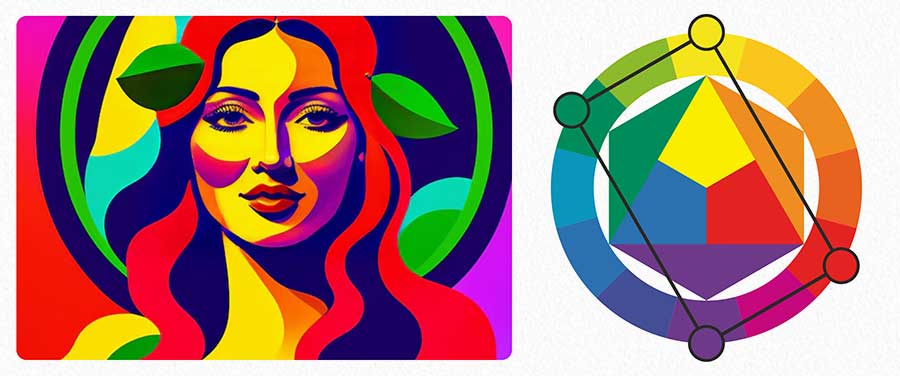
This scheme uses two complementary colour pairs. This rich colour scheme offers plenty of possibilities for colour variation and is best used with one dominant colour and the others as accents.
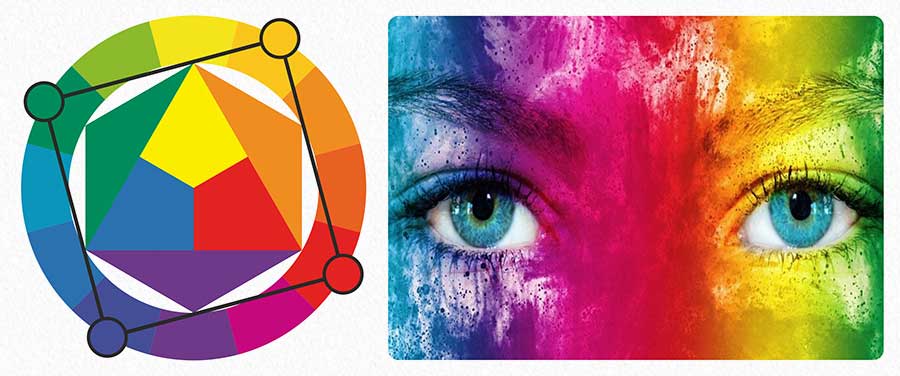
This scheme is similar to the tetradic scheme but with all four colours spaced evenly around the colour wheel. It provides balance and visual interest.
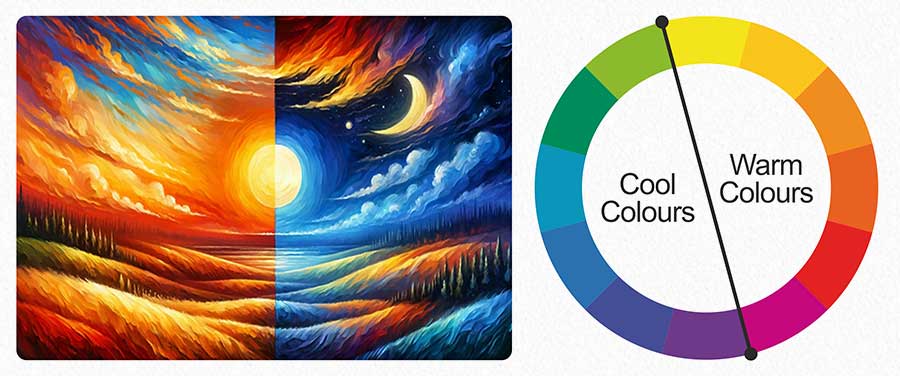
Warm colour schemes use colours like red, orange, and yellow, which evoke warmth and energy. Cool colour schemes use colours like blue, green, and purple, which evoke calmness and tranquillity.
Whenever we create an artwork there are 7 elements or components, that our artwork consists of. In most cases, we take these elements for granted or don't even think about them twice.
read moreNo wonder, the enchanting Madhubani Art has traveled across many ages to reach you today! Folktales from the great Hindu epic Ramayan describe the auspicious birth of ‘Shree Sita’ from the sacred soil of Mithila.
read moreColour schemes in art refer to the organised and intentional use of colours to create specific aesthetic or emotional effects in a piece. They are essential for creating harmony, balance, and mood in visual compositions.
read moreAs a student of fine arts or design, it’s important for you to have a solid command of colour theory. Colour theory is the art of combining colours based on the colour wheel, an organized illustration of the primary, secondary and tertiary colours.
read moreToday, the world is at war again. An invisible war. Dangerous too. The enemy is within us. In our stressed minds, sad thoughts, jealousy and troubles. But just as there is always a silver lining in dark clouds, there is hope for recovery.
read moreछुट्टियों की दस्तक हो चुकी है! और सच बताना छुट्टियाँ किसे पसंद नहीं? इनकी प्रतिक्षा तो हर कोई बड़ी बेसब्री से करता है। जीवन में इनका महत्व ठीक वैसा है जैसे किसी हरे-भरे खेत में कल-कल करती नहरों का। हर किसी के पास चाहे वो बड़े हो या बच्चे, छुट्टियों को बिताने का ढेर सारा प्लान होता ही है!
read moreBFA is a degree level program that is meant for students who have a passion for learning fine art and its different fields like drawing, visualization etc. The program is designed in a way that creates interest in the aspirants and makes them feel confident to appear in the exam.
read moreThe demand for resin art, which has become very popular in recent years, is increasing rapidly and is a medium to open many opportunities for artists in the art field in the future. Nowadays it is very much in demand and also many people want to learn this as well.
read moreArt is very important in human life. In today's era, every person wants to be associated with art. Through art, the man displays his feelings to the audience. We can express our emotions through many mediums of art, such as oil painting, watercolour art, etc. One of them is "acrylic painting" about which today we will know what is acrylic painting.
read moreHimanshu Art Institute organised online competition 'Creativity with Positivity' on the social media's Instagram platform. As per competition rules, the works sent by the participants were published for seven days on the Instagram profile page of Himanshu Art Institute and Painting Ki Pathshala.
read moreWarli paintings are a very ancient form of Indian traditional art. It is a tribal art mostly created by the tribal people of the North Sahyadri Range in Maharashtra. The Warli paintings in Maharashtra are one of the finest examples of the traditional style of folk paintings. Warli greatly rejects contemporary culture, the warli culture focuses on the concept of mother nature and the warli paintings often depict elements associated with nature.
read moreIndian Traditional Arts are culturally very strong and inspire artists to create artifacts like treys, boxes, photo frames, etc. which have become extremely popular globally. Lots of artists are emerging and doing this art on paper or canvas with acrylic colors and taking this art to international art galleries. If learned professionally this simple art can take you to the next level altogether and can help you make a career as well.
read moreJapanese origins began shortly after Chinese Buddhist monks took the paper to Japan in the sixth century. The monks nominated it as 200 AD.
read moreTo date, Art & Craft has been looked upon as a hobby course but now career prospect is vast. Numerous opportunities can be found. Craft is a vast field in itself.
read more